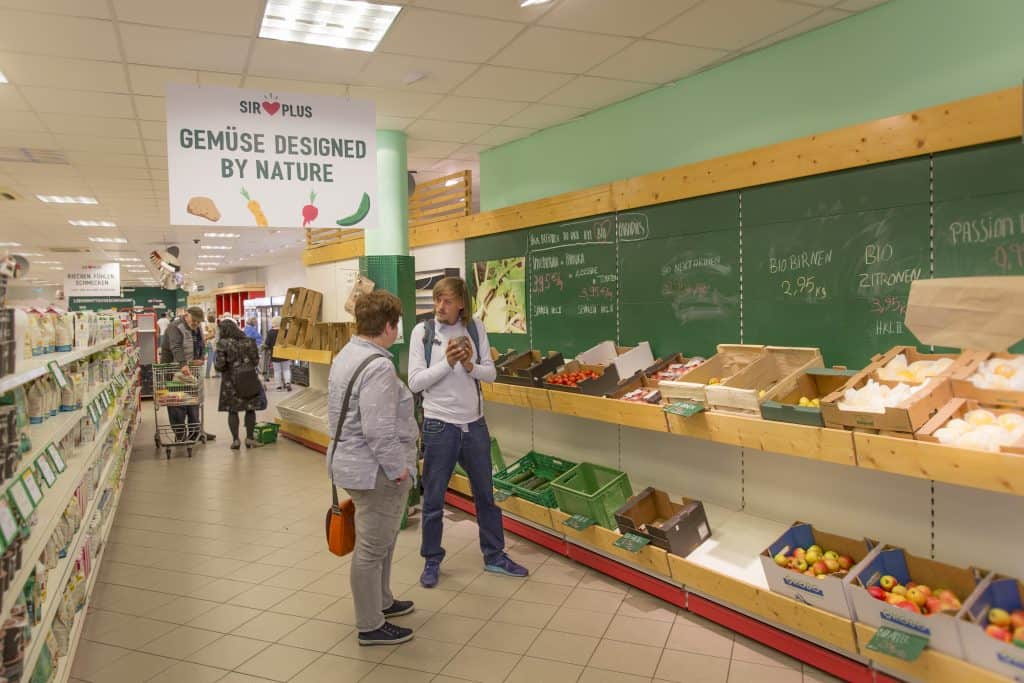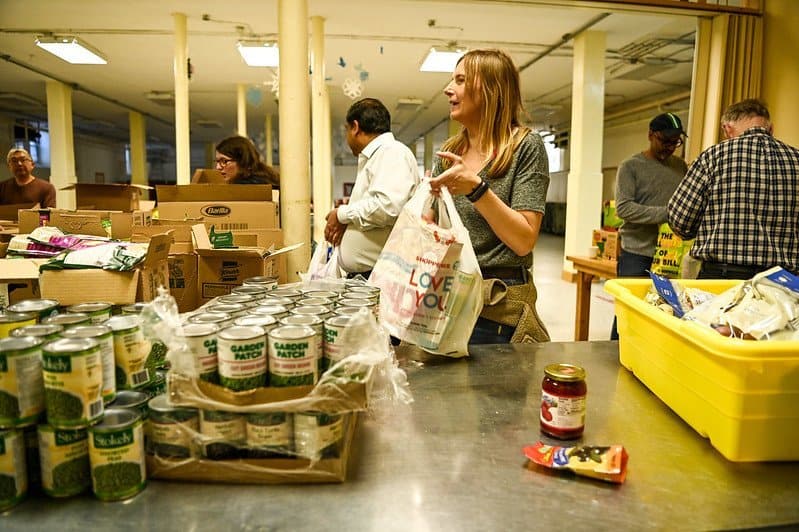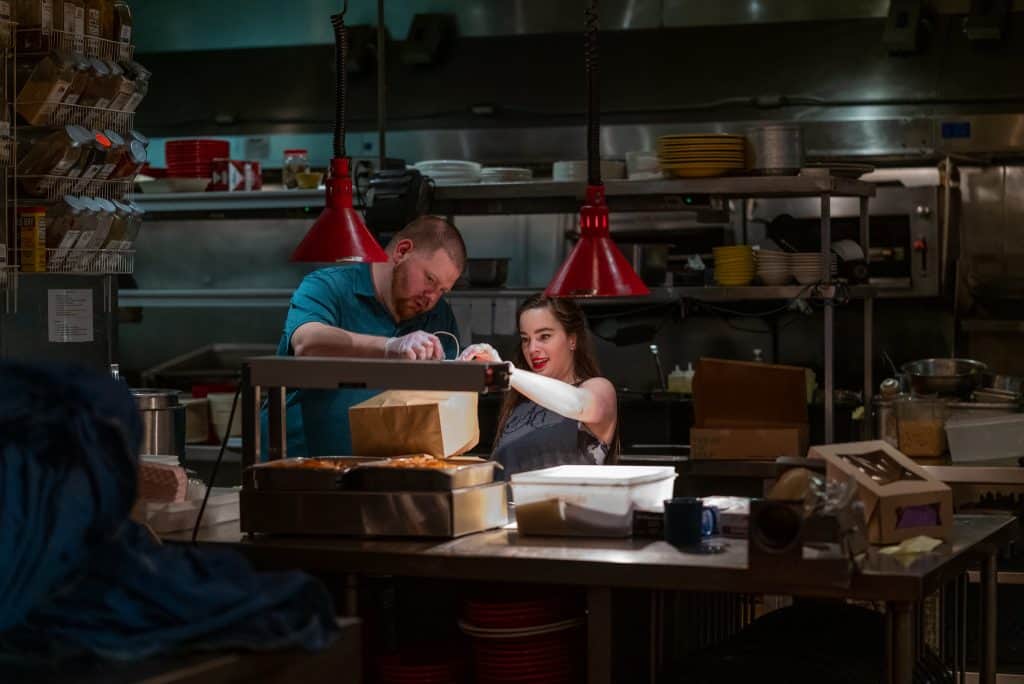In the best of times, the United States wastes 40 percent of its food annually, amounting to about 63 million tons. The collective response to the coronavirus pandemic, from panic buying at grocery stores to restaurant closures, is bound to inflate that percentage, food loss experts say, at a time when food insecurity is on the rise.
The biggest source of food waste in America is households, where produce wilts, milk spoils and leftovers lurk at the back of the fridge until they are tossed. Now, anxious consumers who have been hoarding food may discover there’s no way they can eat everything they’ve bought. Says Frank Franciosi, of the U.S. Composting Council, “We may see municipal curbside collection of food waste go up as more people eat in or take out.”
Indeed, San Francisco, which has long collected both residential and commercial food scraps from curbsides, has already seen an impact.
“People are cooking more at home,” says Robert Reed, of Recology, the company that handles the city’s discards. “Tonnages of food scraps from single-family homes and apartments are up.” New York City’s curbside collection of food scraps has also seen an uptick over the past two weeks.
Waste at restaurants — where Americans typically spent about half their food dollars before the coronavirus hit — is plummeting as eateries shut down. But it’s likely to rise at those shifting to a take-out-only model.
“This is a period of colossal readjustment,” says Andrew Shakman, founder of LeanPath, which develops technology to reduce waste in the food-service industry. “Food waste per meal tends to increase for our customers when their sales volumes are lower, so we expect operations that are running at partial speed to become more wasteful per meal served.”
Then there are farms, where, even in the best of times, growers leave as much as half their crops in the field, largely because of cosmetic imperfections. Now, produce growers fear that even more crops will go unharvested. U.S. immigration policy has constrained visas for workers entering the country, and the arrival of 200,000 seasonal migrants is in doubt. And because living conditions for farm laborers are crowded, making them especially vulnerable to the coronavirus, illness could keep many from working once they arrive.
Crushed by negative news?
Sign up for the Reasons to be Cheerful newsletter.With restaurants, schools, caterers, corporate cafeterias and some farmers markets shutting down, farmers also have fewer outlets for their highly perishable produce, exacerbating a supply bulge.
Finding new markets for crops that don’t keep, like leafy greens, is difficult. “Farmers planned for their sales outlets months ago when they planted,” says Ben Feldman of the Farmers Market Coalition. “If their markets are forced to close and they can’t pivot to other sales outlets, that produce will rot in the field.”
“Hoop houses and greenhouses were already producing in the southern half of the U.S.,” says Eric J. Deeble of the National Sustainable Agriculture Coalition. “Now those farmers are sitting on a lot of produce. There’s no home for it.”
What can be done?
In the face of all these coronavirus challenges to the supply chain, what can be done? At home, cooks need to learn how to maintain everything they’ve bought.
“This is a great time to learn how to store your produce so you have more time to use it,” says Dana Gunders, executive director of ReFED, which works with businesses, nonprofits, and governments to reduce food waste and loss. “Freezing food is a really effective strategy to reduce waste,” she says.
“People also need to better understand date labels on food” — there’s no reason to toss food after its “best before” date, for example — “and how to prepare batches of food that can be eaten later.” Gunders wrote an entire book on the subject, The Waste-Free Kitchen Handbook: A guide to eating well and saving money by wasting less food.

Restaurateurs have taken different tacks to avoid squandering the ingredients on their shelves. Although many have simply shut their doors, others have shifted to take-out meals. Still others have reinvented themselves, if only temporarily, as grocery stores, selling off inventory from herbs to olive oil and avocados. Some restaurants desperate to avoid waste are giving food away to their furloughed workers or to the public. Before it closed its doors recently, Philadelphia’s Oyster House gave away all its unshucked oysters.
Among other innovative food-waste solutions, the farm-to-table restaurant Herbfarm, in Woodinville, Washington, has repurposed its kitchen to create boxed three-course meals for medical workers. In New York City, about 30 restaurants are getting $40,000 grants from the nonprofit Rethink to pay staff, create take-out meals from other restaurants’ surplus ingredients, and offer them to the public for a $3 donation.
Food insecurity and bottlenecks
But food banks, which handle a much larger amount of food and serve many more people, need a more robust source of supply. Before the coronavirus outbreak, supermarkets and food companies channeled excess to food banks, moving nourishment to people most in need while also keeping surpluses from rotting in landfills. With grocery stores now working on overdrive, breaking sales records as consumers stock up on supplies, those donations are dropping off. Meanwhile, food insecurity is on the rise as millions of people lose their jobs.
To unclog this bottleneck, lawmakers included $450 million in the recent stimulus package for the U.S. Department of Agriculture to buy and help distribute food to food banks. Donations from restaurants — forced to close or shift to take-out only by governors in more than half the states — have also risen.
But getting their hands on pasta, beans and tomato sauce isn’t the only challenge confronting organizations that feed the food insecure. Social service agencies that have historically relied on volunteers to prepare and serve meals to the hungry are feeling a crunch right now. Demand for their services is up, but volunteers, who skew older and are at higher risk for COVID-19, aren’t showing up to work.
And because congregating in crowds, whether in soup kitchens, senior centers, or food pantries, is now forbidden in many states, agencies are scrambling to find ways to deliver meals to clients sheltering in place, turning to laid-off workers, taxi drivers, and DoorDash. The California Association of Food Banks has asked the governor for 20,000 National Guard soldiers to help assemble food boxes, load trucks, and deliver aid.

Moving excess prepared food to places in need from caterers, corporate kitchens or restaurants has always been fraught with challenges. Distribution is one; cold storage and liability are others. But in crisis there is opportunity.
“ReFED works directly with a number of innovative and nimble food-rescue organizations,” Gunders says. “They’re trying to capture more prepared food, finding ways to use enabling technology to connect donors and recipients a little more efficiently.”
Online apps are a big part of this. In Kansas City, for example, FeedKC.us lets restaurants and catering companies list their offerings, then connects them with drivers who deliver that bounty to food banks in need. Ditto with Replate, which operates in the Bay Area, New York City, Chicago, Seattle, Boston, Los Angeles, Austin and Dallas, and 412 Food Rescue, in Pittsburgh.
As the weeks of confinement drag on, and consumers become less anxious about the food (and toilet paper) supply, many may stop hoarding. They may also grow increasingly familiar and comfortable with online food platforms.
Gunders says such a behavioral change might have a profound effect on food waste: To the extent that consumers order groceries two or three days in advance of need, online retailers can order more precisely from their sources to meet that demand, further reducing waste.
But all that is far in the future, and things are changing quickly. “These are early days,” says Gunders. “The next few weeks are going to look very different from the eight weeks that follow.”
This story originally appeared in National Geographic. It is part of the SoJo Exchange of COVID-19 stories from the Solutions Journalism Network, a nonprofit organization dedicated to rigorous reporting about responses to social problems.






